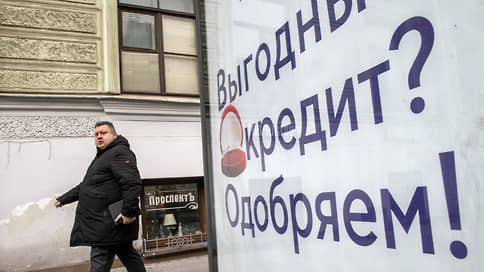The Bank of Russia announced an accelerated growth in lending and bank deposits of the population in May 2023
[ad_1]

The Bank of Russia announced an accelerated growth in lending, as well as bank deposits, to the population in May 2023. The annual volume of lending to individuals has already significantly exceeded the expectations of the Central Bank, but the growth rate of private consumption is still less than the regulator’s expectations. Analysts are now not detecting the threat of acceleration of inflation from the rapid growth of debt on loans to citizens, and the regulator itself is already cooling the demand for unsecured loans.
According to the Central Bank, the growth of lending to the population is accelerating for the third month in a row. In May, its volumes, taking into account the acquisition of property rights, increased by 2%, by 0.3 percentage points higher than in April. Not only issuance of mortgages grew rapidly (2.2% in May against 2.1% in April), which was stimulated by state support programs (in this part, the issuance increased by about 9%, while the market part decreased by 3%), but also auto – (3% vs. 2.6%), and consumer lending (1.7% vs. 1.2%). The growth rate of the latter against the backdrop of a rapid increase in the issuance of unsecured loans turned out to be the highest since September 2021 in May – 10.3% in annual terms (see chart).
The growth rate of total loans to individuals (15.4%) exceeds the forecasts of the Central Bank (11-15%), “it is surprising that against the backdrop of such a credit boom, Sberindex data signal a weakening in consumer demand in the second quarter,” analysts from the MMI Telegram channel note. “Lending data indicates continued demand from households,” said their colleagues from the Solid Numbers Telegram channel. In turn, economists of the Bank of Russia point out that over the past year, the recovery in consumer lending has outpaced the growth in nominal wages, which may create risks of deterioration in the credit quality of the portfolio as a whole. “The possible increase in the key rate at the next meetings on the monetary policy, together with macroprudential measures, will act as a cooling factor for borrowing. The adaptation of consumers to the current conditions, accompanied by a decrease in the conservatism of consumer habits, is likely to help maintain positive growth in consumer lending,” Raiffeisenbank economists believe. Meanwhile, according to the bank, the growth of ruble savings is still outpacing the pace of lending, and the indicator reflecting the impact of the credit and deposit channel on consumption (the growth of consumer loans minus the growth of household deposits) is still in the negative zone. But, as the authors of the calculations note, it is impossible to unequivocally state that such dynamics indicates the continued conservatism of consumption – part of the new ruble savings can be created by converting foreign currency, which is not directly related to the nature of consumer behavior. “Consumer habits are a significant source of uncertainty in estimates of the rate of recovery in consumption (and, accordingly, its impact on inflation). Given the still weak actual consumption statistics, the Central Bank expects its rather active growth this year (3.5–5.5% yoy) and associates pro-inflationary risks with it, which it is ready to stop through a temporary tightening of monetary policy,” they conclude.
Using a similar indicator – the ratio of retail loans to household funds in banks – the economists of the MMI Telegram channel do not see any threats of inflation acceleration from the growth of loans to individuals. According to their observations, people still spend cautiously (especially those who have money), preferring to save, but “banks, in anticipation of tightening regulation, tried to shove loans to the most risky groups of borrowers, reducing requirements for them.” This is already resulting in a noticeable increase in the delay (see Kommersant of June 23). The Central Bank has been trying to stop this by tightening macroprudential requirements for unsecured loans since July 2023 (see Kommersant dated May 23).
[ad_2]
Source link






